By Lauren Griffin, Public History MA student at Temple University
Header photo courtesy of the Free Library of Philadelphia, Print and Picture Collection
Let’s travel back to 1884 North Philadelphia, specifically, the Punch Bowl, a tavern and inn on Lamb Tavern Road near 2100 N Broad Street. The Punch Bowl was built in 1840, but it would be demolished in 1884. Local folks used to gather to watch the horses race up and down Broad Street, and its location wasn’t too far from the many mansions that made their home on North Broad Street. Many patrons of the Punch Bowl could have also traveled over to the tavern after getting off work from one of the many nearby factories, such as the Stetson Hat Company. After the Civil War ended, Philadelphia’s population grew rapidly. Drawn in by new jobs due to rapid industrialization, emancipated Black citizens and immigrants filtered into Northern cities. Streetcars were introduced to Philadelphia in 1858, connecting the suburbs and industrial zones throughout the city.
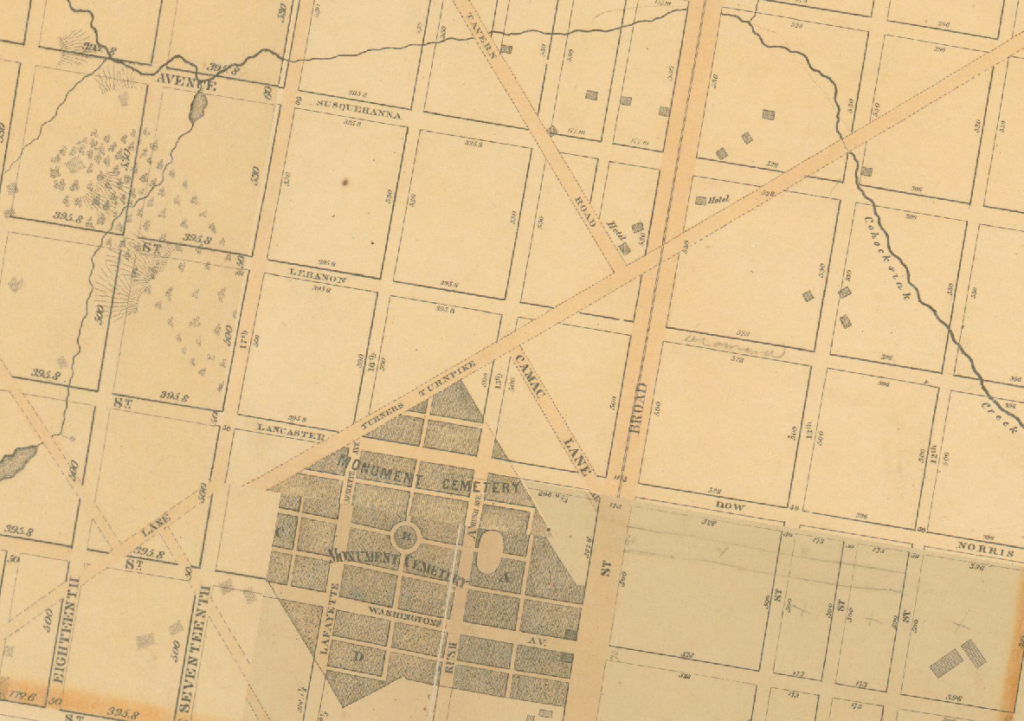
1862 Philadelphia Atlas showing Lamb Tavern Road, Monument Cemetery, and the area that Temple would begin developing in a few decades. (Philageohistory.org)
Down the road from the Punch Bowl, a man named Russell Conwell was gathering with seven working class men for tutoring lessons. These meetings were the beginning of what would eventually become Temple University. The group would meet at 1913 Mervine Street after getting off work in an attempt to better their life circumstances. Word eventually spread of the educational opportunity Conwell was offering for Philadelphia’s working class men, and the small meetings soon grew too large for the small rowhome.
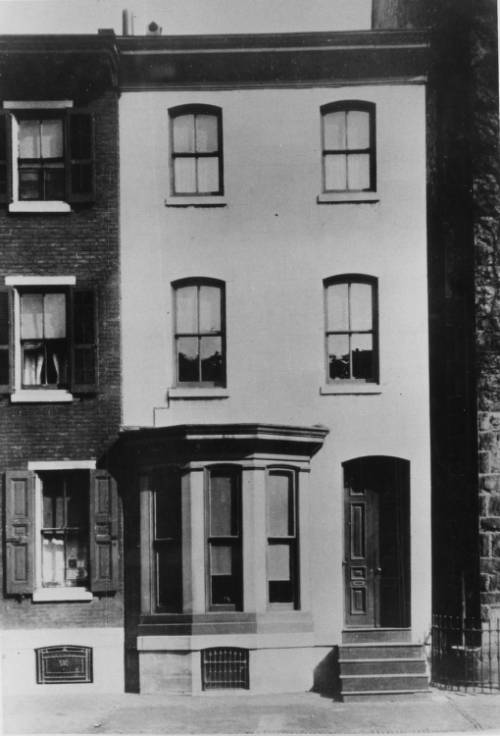
With an early emphasis on night classes (7:45 – 9:45pm) to accommodate a work schedule, it was likely that Temple’s first students brought food from their homes or found food at local taverns for meals. The first classes of students would sometime meet in the basement of the Grace Baptist church for communal meals. These meals, called “Talent Penny Suppers,” were organized to help fundraise for programming and services during Temple’s early years.
Philadelphia has a long history of taverns, and in the colonial era these taverns were important centers of political debate, community formation, and social life for working men. The early taverns typically offered lodging options, but taverns in the 19th century had reduced their offerings to alcohol and simple meat-based meals. Following the Civil War, the Temperance Movement began to focus on taverns and saloons as centers of masculine working class life, and concerned industrialists supported the move to reduce worker intoxication. Taverns were just one source of food for Temple’s first cohorts.
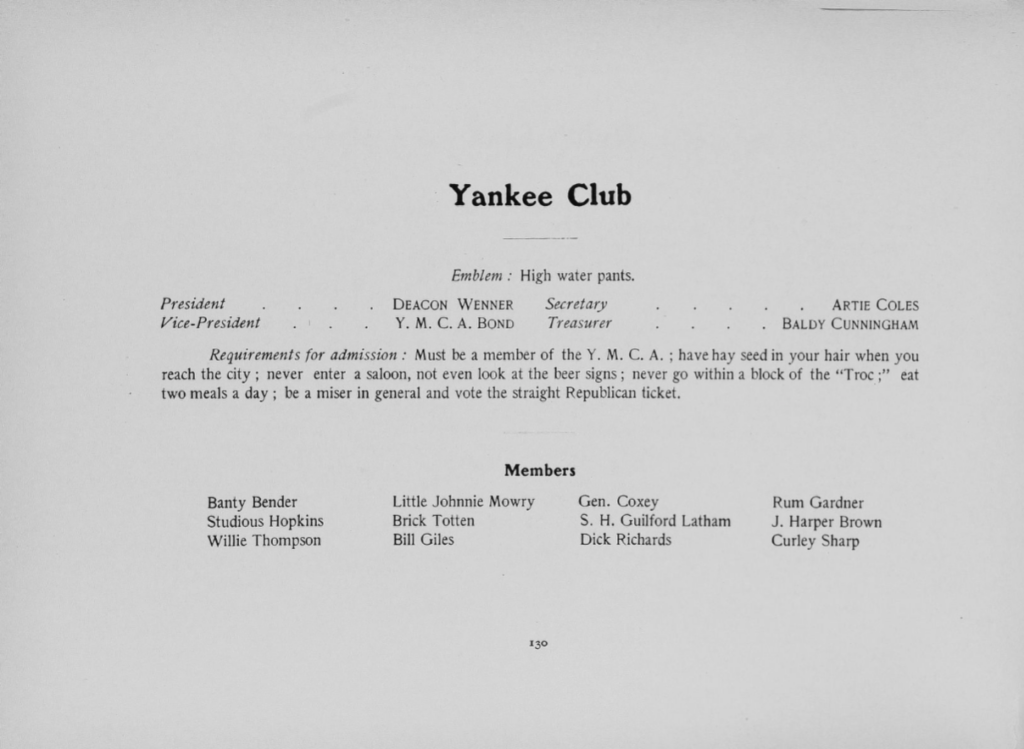
Food options in the area would change over the decades as Temple grew, and the introduction of the Prohibition turned taverns into speakeasies. Temple’s crafty students continued to find ways to procure alcohol even with the Prohibition in place. They brewed gin in their bathrooms and smuggled drinks into school dances. Not everyone was against the 18th Amendment, however, and having a dry campus was preferable to some students and Temple administration.

The Prohibition was eventually repealed, and bars once again started popping up around the young campus. One of the more popular local hotspots was the bar Pete’s Tavern on the corner of 13th and Montgomery. With its location so close to campus and student dormitories, Pete’s was a popular spot to grab a drink and socialize. The Temple News even used the bar as their “night office” in the early 1950s.
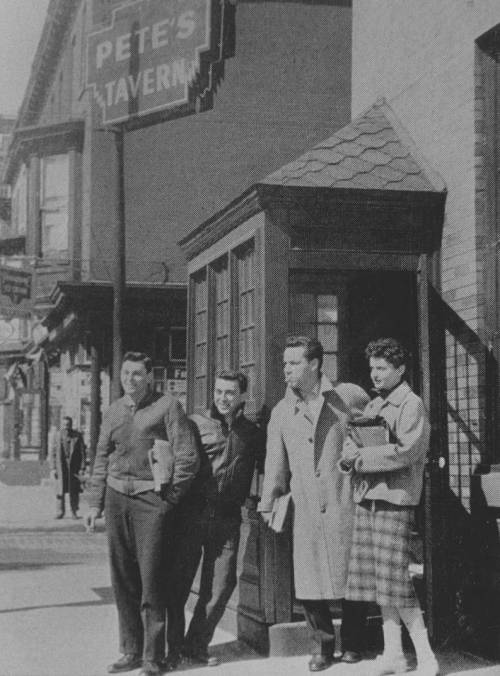
Unfortunately, Pete’s Tavern was demolished in 1956 to build a parking lot. That parking lot would also be demolished eventually and replaced with the Tuttleman Learning Center.
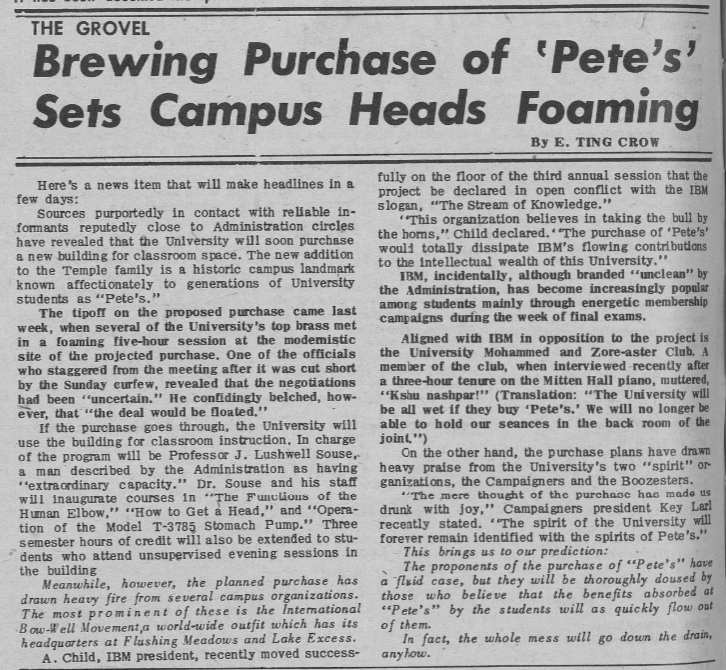
Pete’s loss was lamented, but there was always another business to take its place. As Temple ramped up their expansion plans in the 1950s and 1960s, some community members protested having bars in their community. With more and more students living on and around campus, community members were concerned about inebriated students causing trouble. There were also instances of drunk driving accidents as commuters tried to make their way home. Rather than creating a fully dry campus, Temple administration responded by implementing new guidelines in an attempt to educate students on how to drink responsibly.
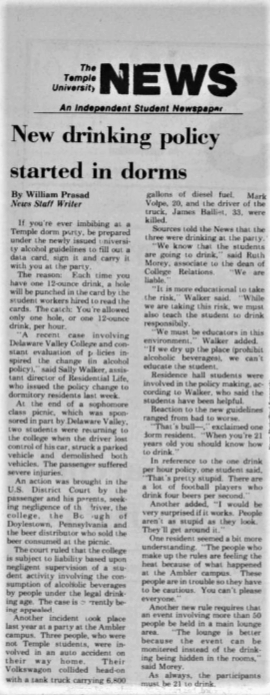
Temple still deploys this tactic when it comes to student drinking. Despite the idea that Temple is a “dry campus,” the lawful sale and consumption of alcohol is allowed on university property, with some exceptions. Students are not allowed to have or consume alcohol within Temple dormitories, but they can walk down to Maxi’s along the Park Mall and grab a drink there. There are other popular student late night hangouts near campus, some of which did not survive the effects of the pandemic and loss of student business.
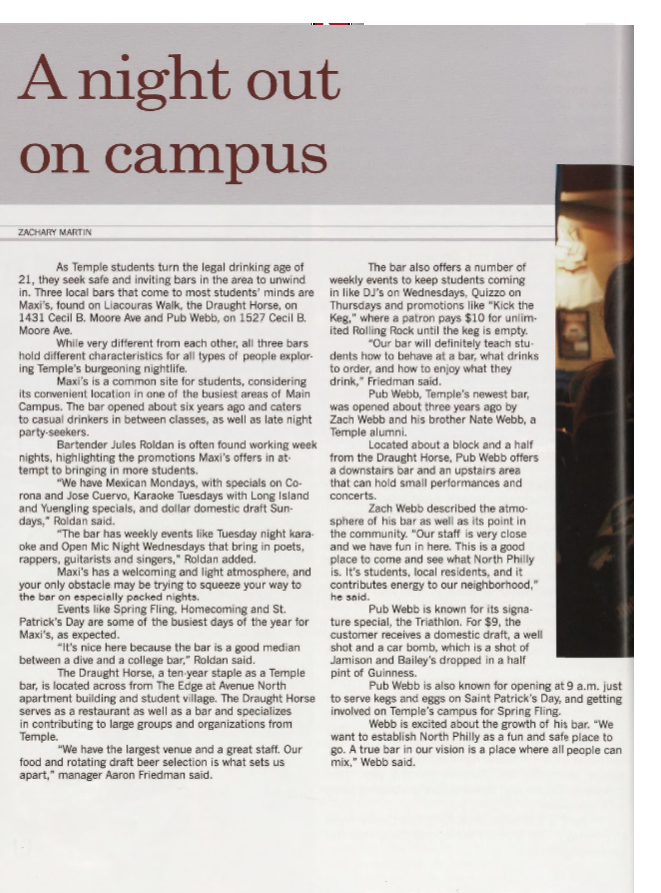
The presence of alcohol might seem like a common thread through Temple’s history, but behind the alcohol is the importance of social spaces for Temple’s student body. North Philadelphia community members have valid concerns when it comes to alcohol creating issues or being linked to instances of crime in the neighborhood. What kind of social spaces are being created around campus, and who are they for? As demographics shift in “Temple Town,” whose influence holds the most weight in these discussions: Temple administration, Temple students, or North Philadelphia residents?